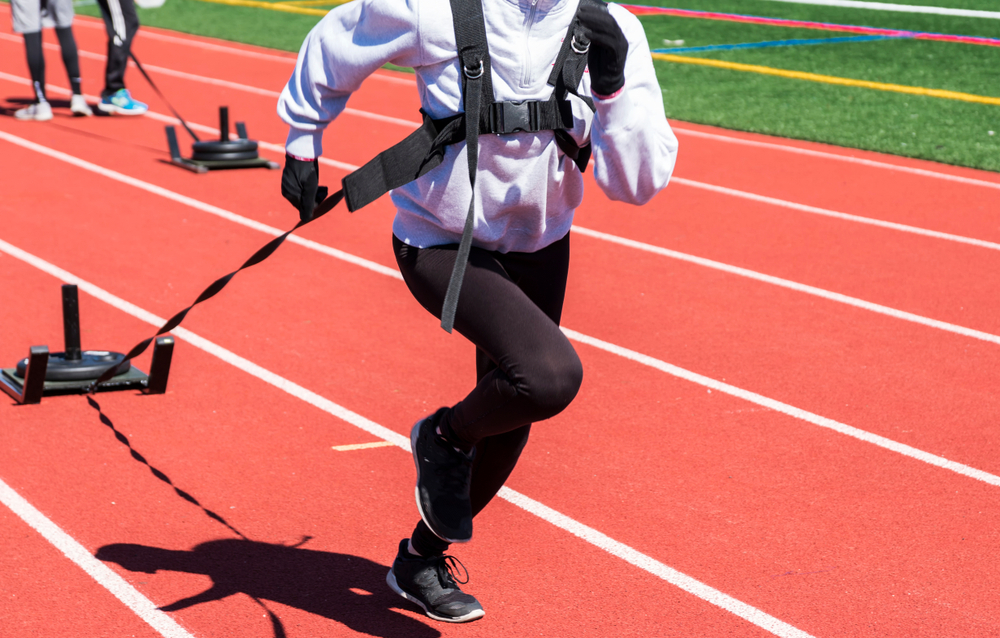Sprinting and change of directions work involve substantial ground reaction forces, and without adequate strength to provide eccentric control, unprepared bodies turn to mush. You have to have force in order to display force quickly. How does this apply to incorporate speed work in a strength training program?
Is it training plan for me?
Very simply, if you haven't built a solid foundation of strength, incorporating specific speed work in your program probably won't do much for you.
What's a solid foundation ofstrength? If I had to estimate it based on previous experience, I'd say a 1.5x bodyweight squat, 1.25x bodyweight bench press, and 1.75x bodyweightdeadlift.
With folks that aren't quite at that level who still want to give a passing nod to speed, I typically just recommend that they add a few additional warm-up sets on their first exercise of the day. On these additional sets, their focus is outstanding concentric bar speed in perfect technique.
So if a 185-pound guy is working up to squatting230×3he might proceed as follows:
Bar (45) x 8
95 x5
135 x3
155 x3 Fast
165 x3 Fast
175 x3 Fast
185 x3
205 x3
230 x3 (first official work set)
A normal work-up for this guy might be:
45 x8
95 x5
135 x3
185 x3
205 x3
Then on to his first work set at 230. In this instance, however, headds threesets of speed work without beating upon his body or adding unnecessary volume that could interfere with his more important work sets. In the process, he not only gets a chance to practice technique but also learns that he should always accelerate the bar as fast as possible. The intent to develop force quickly is where it's at -even if the bar speed isn't tremendous, that bar speed will come in time.
Add this to your strength trainingprogram!
A lot of people get stuck in a rut when it comes to training speed in the context of strength and conditioning. It seems like everyone's all about just doing box squats and bench press -but there really are a number of other options.
Sprinting: No equipment needed. It might not carry over perfectly from a specificity standpoint, also you can add parachutes or sleds to make your workout harder.

Box Jumps: You go up, but don't come down -so the pounding on the body is minimized. I've read of quite a few high-leveldeadlifterswho have utilized box jumps with outstanding success.
Broad Jumps: You can do these with bodyweight only, or against added resistance. Band-resisted broad jumps are arguably myfavouriteexercise for training posterior chain power.
Medicine Ball Drills: These might not carry over from a specificity standpoint, but frankly, people spendtoomuch time in thesagittalplane -and power training is no different. Plus, it's fun as hell to try to smash medicine balls. You can do overhead, rotational, and scoop variations. I'd also put sledgehammer swings against tires in this category.
Olympic lifts: As notedearlier, assuming you learn proper technique and you have the adequate mobility to perform them correctly, you can't go wrong with Olympic lifts if you're trying to improve universal bar speed. Cleans, snatches, high pulls, jerks, you name it; if you're slow, they can help.
Squat Variations: You have loads options for variations; different bars (straight bar, giant cambered bar, safety squat bar), free squats, box squats, Anderson squats, and different forms ofaccommodatingresistance (chains and bands).
DeadliftVariations: You can do conventional, sumo, trap bar, and snatch grip variations.
Bench Press Variations: As with the last two examples, variety is easy to include. You can vary grip width, change bars (straight bar, multipurpose bar, thick bar), perform the movement with or without a pause at the bottom, and implement different accommodating resistances.
Plyometricor Clap Push-ups: These can be a good change of pace for those who are bored with speed benching -and they can be great exercises to take on the road if you don't have a lot of equipment at your fingertips.
Summary
Everyone needsspeed, but some certainly need to improve in this regard more than others -and some don't even "qualify"for dedicated speed workbecausethey haven't already built up a solid foundation. If you use the aforementioned strategies for implementing speed training in your training program, I'm confident that you'll start hitting big weights faster than ever.









